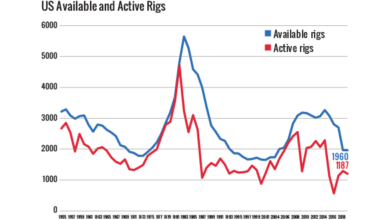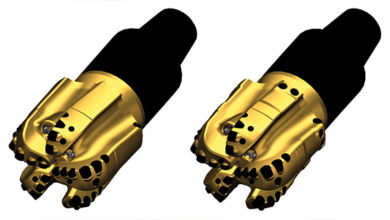Drilling & Completion Tech Digest
Transocean set to upgrade 5 additional floating rigs with Automated Drilling Control systems
Transocean has entered into an agreement with Equinor to license and install Automated Drilling Control (ADC) systems on four high-specification, harsh-environment rigs on contract in Norway and a fifth semisubmersible that is expected to commence operations in the Norwegian sea this summer.

The Transocean Enabler was previously equipped with the ADC system in 2017 and has delivered tangible improvements in overall drilling efficiency that have led to more cost-effective wells for Equinor. Further, the system has demonstrated improvements in well integrity, while enhancing safety and operations assurance.
In addition to the Transocean Enabler, the upgraded floaters in Transocean’s fleet will include the Transocean Spitsbergen, Transocean Norge, Transocean Encourage, Transocean Equinox and Transocean Endurance.
The ADC systems were developed through a combination of technologies from MHWirth, National Oilwell Varco and Sekal. They enable, among other things, higher rates of penetration while drilling, highly stable bottomhole pressures avoiding swab/surge effects, and early detection of kick/loss events.
“The ADC upgrades advance our automation efforts and further enhance our industry-leading fleet of high-specification, harsh-environment semisubmersibles,” said Jeremy Thigpen, Transocean President and CEO. “We are delighted to work alongside Equinor and our suppliers as we continue to identify and realize opportunities to deliver safer, higher-quality and lower-cost wells for our customers.”
ExxonMobil to leverage cloud technologies in permian
ExxonMobil is entering a partnership with Microsoft that will make its Permian Basin operations the largest-ever oil and gas acreage to use cloud technology. The operator said it expects to generate billions in net cash flow over the next decade through improvements in analyses and enhancements to operational efficiencies.
The application of Microsoft technologies by ExxonMobil’s XTO Energy subsidiary – including Dynamics 365, Azure, Machine Learning and Internet of Things – is anticipated to improve capital efficiency and support Permian production growth by as much as 50,000 oil-equivalent barrels per day by 2025.
ExxonMobil’s partnership with Microsoft includes an integrated cloud environment that securely and reliably collects real-time data from oilfield assets spanning hundreds of miles. The data will enable ExxonMobil to make faster and better decisions on drilling optimization, well completions and prioritization of personnel deployment. Importantly, leak detection and repair response times could be further reduced with enhanced access to emissions data.
ExxonMobil’s application of these technologies in its Permian Basin acreage, which covers a 9.5 billion oil-equivalent barrel resource base and more than 1.6 million acres, represents industry’s largest acreage position using cloud technology.
Microsoft’s platforms will enable ExxonMobil to rapidly incorporate third-party solutions at scale across the Permian. Examples include mobile field data apps to optimize well performance, and AI algorithms for analyzing drilling and completions data to improve performance.
Blockchain-based trading platform launched
PermianChain Technologies has launched the prototype of its platform for trading yet-to-be-developed oil and gas reserves. The platform takes a blockchain-based approach using the Permian Token (XPR) to put a value on potential oil and gas reserves and a market where these tokens can be traded securely and transparently. By digitizing oil reserves, it becomes easier to understand a project’s viability and status. The approach will also reduce the administrative costs involved in a trade. The platform is being developed on IBM’s Hyperledger Fabric.
New, shorter perforating system field-tested
DynaEnergetics announced it has achieved a 100% success rate on field trials of its DS Trinity perforating system. At 8 in., DS Trinity is up to 3.5 times shorter than conventional perforating guns, enabling much higher gun counts per stage. The reduced length was achieved by aligning the charges on a plane, versus the traditional spiral placement of charges down the length of a gun.
In a recent field trial, the customer shot 32 stages in 6-in. casing. A total of 25 4-in. DS Trinity systems were used per stage and perforated in 10-ft increments. The trial was completed with charges that provided the caliber equivalent of a four-shot gun.
The 4-in. guns were used in lieu of typical 3 1/8-in. guns to minimize the gap between the gun body and casing. This created more consistent perforations and improved fracture stimulation. The system also enabled accelerated pump-down operations and reduced water usage. Based on the success of the trials, the operator said it plans to complete additional jobs using the 4-in. system.




